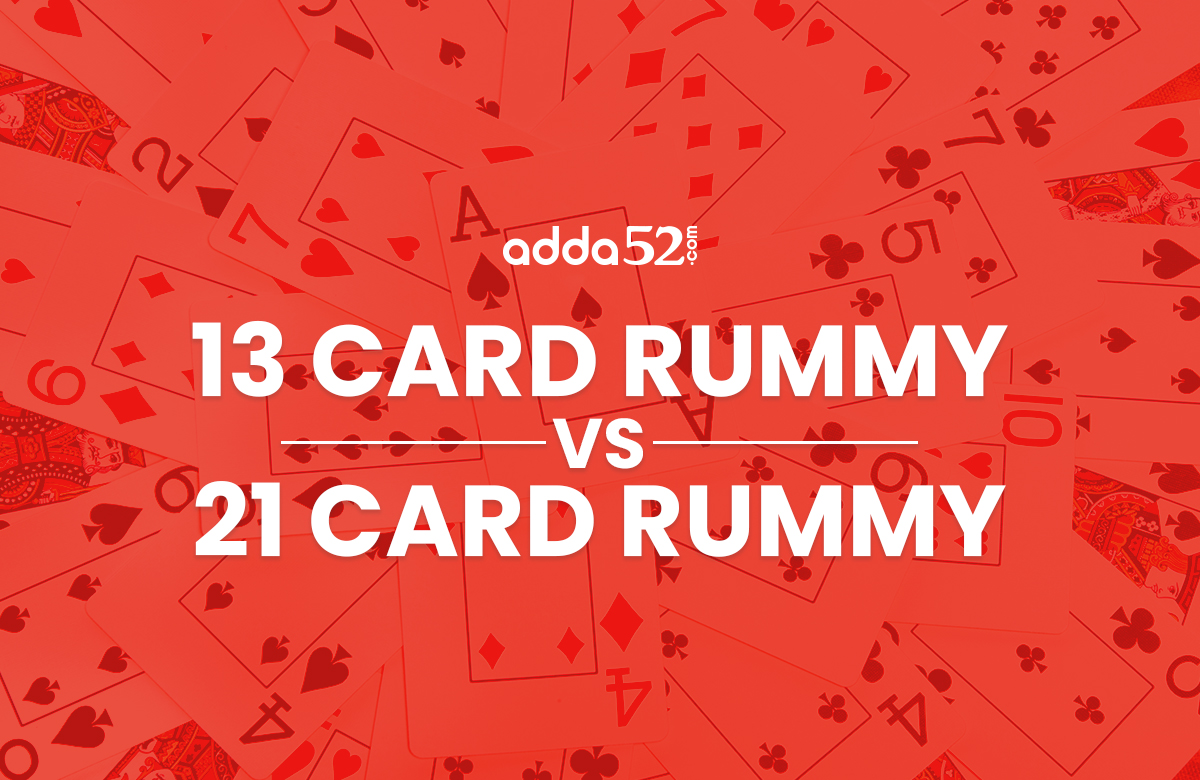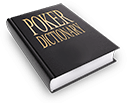13 Card Rummy Vs 21 Card Rummy Game

Introduction
Rummy, a classic card game with variants like 13-card and 21-card, has become increasingly popular these days. Both of these variations offer unique challenges and strategies for players. In this blog, we will explore the differences between these two -
What is 13 Card Rummy?
In 13 card rummy, the objective is to arrange the cards in your hand into sets or sequences. A set consists of three or four cards with matching values but different suits, while a sequence comprises three or more consecutive cards all belonging to one suit.
How to Play 13 Card Rummy
In this game, a regular deck of 52 cards (with no jokers) is utilized and every player gets dealt 13 cards. To commence the gameplay, players alternate between drawing from either a closed deck or an open deck (pile of cards discarded by players). After drawing, they must discard one card to the discard pile.
Players arrange their cards into valid sets and sequences. Once a player meets the minimum initial meld requirement, typically having at least one pure sequence (a sequence without a joker), he may opt to lay down his cards as part of the melding process. After organizing all his cards into valid sets and/or sequences, he signals this by discarding one card in the finish slot. Subsequently, other players have an opportunity for creating valid sets and sequences with any remaining cards in hand before gameplay concludes.
Once a player completes his turn, the scores are deduced from the remaining cards in his opponents' hands. The card values determine points distributed amongst them and for winning that round, zero points are given to any participant. Play continues until one person reaches a specific pre-established score threshold (typically 101 or 201). In conclusion, triumph goes to whoever finishes with the smallest score at game's end.
What is 21 Card Rummy
The objective of 21 card rummy aligns with that of the 13-card rendition, which involves arranging your cards into valid sets and sequences.
How to Play 21 Card Rummy
During this game, a total of 21 cards are dealt to each player from a standard playing deck containing 52 cards. The players also have access to both printed jokers and wild jokers. In turns, the participants draw one card either from an open or closed deck, then discard another onto the open pile. Additionally, utilizing jokers is allowed as they can replace any missing cards when creating sets and sequences during playtime.
The inclusion of extra cards and jokers increases the potential combinations, elevating both challenge level and strategic thinking required. Comparable to 13 card rummy, a player must announce when he has properly sorted his entire hand into valid sets and sequences. Other players get a final chance to make valid combinations.
Scoring in 21 card rummy is based on the cards left in the opponents' hands after a player declares. Points are calculated based on the remaining cards and the winner receives zero points.
The game continues until one player reaches the predetermined winning score, which could be 201 or any other agreed-upon score.
13 Card Rummy Vs. 21 Card Rummy Game
Number of Cards
In 13-card rummy, each player is dealt 13 cards at the beginning of the game. In 21-card rummy, as the name suggests, each player is dealt 21 cards.
Gameplay
13-card rummy involves faster gameplay due to the smaller number of cards. Players need to form valid sets and sequences quickly to declare. 21-card rummy tends to be more strategic due to the larger number of cards. It requires deeper planning and foresight to create valid combinations within the extended card pool.
Minimum Meld
In 13-card rummy, players are required to form at least one pure sequence (a sequence without a joker) to declare. In 21-card rummy, players may need to form multiple sequences, including pure sequences, to declare.
Scoring
Scoring systems may vary between different versions and platforms, but generally, points are calculated based on the value of cards not melded into sets or sequences at the time of declaration. In both variants, high-value cards carry more penalty points if not melded.
Strategy
Strategy in 13-card rummy often revolves around forming sequences quickly and minimizing the risk of penalty points. In 21-card rummy, strategy may involve planning for multiple sequences simultaneously, utilizing the additional cards to create more diverse combinations, and managing the wildcard joker effectively.
Deck Composition
The standard 52-card deck is utilized in the traditional game of 13-card rummy and usually excludes any jokers. On the other hand, if playing a variant such as 21-card rummy, it may be necessary to incorporate extra decks into gameplay to accommodate for more cards. To guarantee each player has their required twenty-one card count, some opt to use multiple sets of regular playing cards instead.
Risks and Rewards
The risks and rewards in 13-card rummy are comparatively balanced because of the limited number of cards and straightforward combinations. Players often need to weigh their options before making strategic moves while trying not to accumulate penalty points. On the other hand, playing 21-card rummy poses amplified risks with increased chances for higher-value sets due to a larger card pool. Although players may face steeper penalties for unmelded cards in this variant, successfully creating multiple sequences can earn notable rewards as well.
Popularization and Availability
13-card rummy is easily accessible and enjoys widespread popularity on various platforms, including online gaming websites and mobile apps. Its reach has been further expanded through tournaments, promotions, and its acceptance among players. While not as widely favored, some gaming websites offer 21-card rummy that boasts a loyal fan-base. This version of the game could intrigue those who crave distinctive and tailored gameplay encounters beyond conventional options.
Frequently Asked Questions
What is the difference between 13 card rummy and 21 card rummy?
The main differences lie in the number of cards dealt, strategies used, and overall level of engagement. In thirteen-card rummy, each player is given 13 cards which creates a faster pace game with simpler tactics. On the other hand, twenty-one card rummy requires every participant to handle 21 cards leading to increased depth in gameplay strategy.
What is the 13 card game rummy?
13 Card Rummy is a popular game that employs a regular deck of 52 cards. After being dealt an equal number of cards, players aim to arrange them into valid sets or sequences while including at least one pure sequence. Victory is achieved by the player who successfully forms all necessary sets and sequences according to specified rules before anyone else announces their completion.
Which card is best in rummy?
Pure sequences are crucial for a valid declaration in rummy, making cards that aid in forming them the most desirable. In addition, melding high-value cards such as Aces and face cards into sets or sequences can prove to be strategic since it diminishes penalty points if left unmelded.
What is the 13 card game called?
A renowned card game, Rummy utilizes a standard deck of 52 cards and requires players to receive 13 cards each. The objective is to form legitimate sets and sequences using the received cards, ensuring at least one sequence constitutes pure melds while racing against fellow competitors in declaring first.
Conclusion
Although 13-card and 21-card rummy share the basic concept of creating sets and sequences, each variant provides a unique gaming experience as they involve different playing methods. Usually, players decide which version to play based on their personal preferences regarding game duration, difficulty level, and strategic opportunities.
